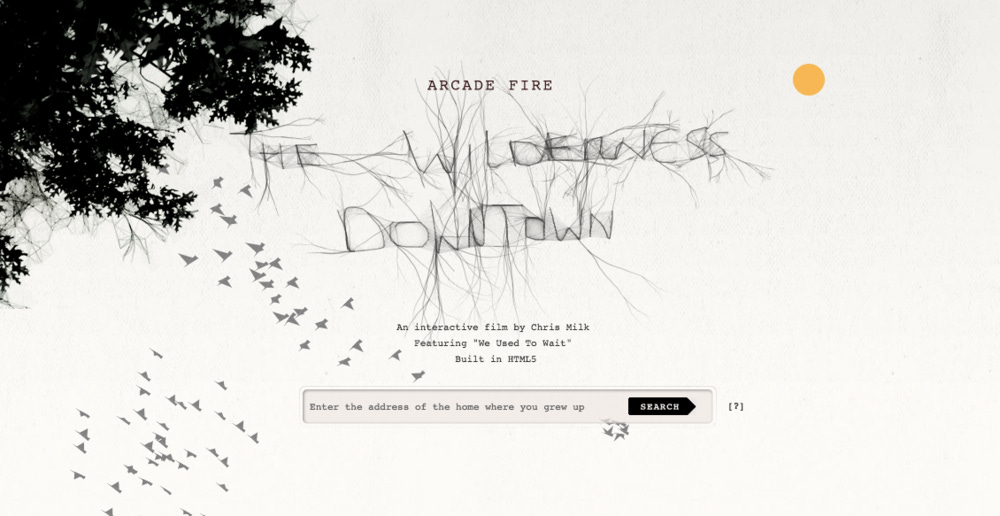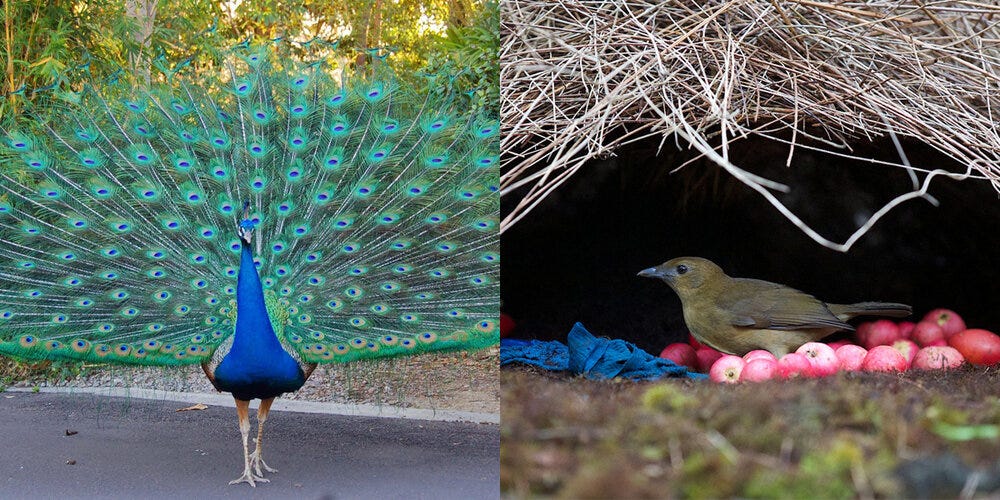COOL SHIT: New Directions in Advertising

"Cool Shit" started as a presentation at the Promax Conference in LA in 2010. Patrick Burgoyne (editor of Creative Review) and I set out to put together an inspirational session, packed with content showing new and interesting ways brands and advertisers are leveraging the power of digital and social media to establish deeper and more meaningful relationships with their audience. People loved it and Promax asked us to update it and go on tour, bringing it to London, Berlin and New York. Since then we received many requests for an online version of the presentation, so here it is. Most of this content is, by definition, independently available online, so this is essentially an articulation of our editorial point of view as presented in our "Cool Shit" sessions.
We feel that the way these campaigns and projects engage with audiences, are representative of a shift of significant proportions within the advertising and communications industry. Any creative knows that they need to start with a good idea to cut through. However, traditional advertising tends to rely on big media spend to increase the reach and impact of a campaign. It’s trying to stand out by shouting louder in the crowd. But people are smart, and the more cluttered the environment the better they get at filtering out the noise. It's worth remembering what San Francisco advertising man Howard Gossage noted in the 60's: "Nobody reads ads. People read what interests them, and sometimes it's an ad."
In this article we are looking at ideas that engage with an audience. We're interested in the way advertisers are finding new ways to get people to pay attention to their messages (and brands) by providing opportunities for them to get involved and engage.
Real World Encounters
This first group of ideas are about events or stunts in the real world that - while initially involving only a small group of people - spread massively because of the way they are documented and reported. They almost become news stories worth sharing, which then gets them widely distributed via both traditional and social media.
There's a questionable British culinary tradition which involves eating crisps, or chips, with your lunchtime sandwich. There's also a town in England called Sandwich. Agency AMV took over Sandwich for the day, hosting all kinds of fun, special activities to make it the best Sandwich ever.
On the theme of giving someone a very special treat, DDB in Paris set up some very special welcomes for passengers on French railways SNCF
When we did this talk last year in LA, one of the ideas that got the biggest reception was Definition 6's Happiness Machine for Coke whereby a magical Coke vending machine in a college cafeteria dispensed all manner of amazing free stuff to the astonished students.
Here's the latest installment of that campaign, the vending machine has become a truck and the venue has switched to Brazil.
The Fun theory was probably the first and remains our favourite example of these real-world encounters
VW asked DDB Stockolm to come up with a promotional strategy for a new technology – providing a new USP for their cars. Instead of a traditional campaign, the agency came up with a viral concept.
As with the Coke idea it's interesting to see how the campaign developed after a year. The whole idea of the campaign was to try to change behaviours by making them fun. A competition asked people to send in their own ideas, the winner being Kevin Richardson who came up with this great idea to improve road safety
Here's another idea based on real-world play - turning the bus shelters in San Francisco into games consoles - by Goodby Silverstein for Yahoo
One more around real-world play: this time a giant online / real world treasure-hunt to promote Bing & Jay-Z’s autobiography. Droga 5 put every page from the book in an appropriate real world situation.and challenged players to find them.
Social Media Interaction
Brands have become very excited about the potential of social media but some of the most interesting ideas we have seen have not been wholly reliant on Tweeting or Liking. Instead they combine traditional and new media, taking the best of both.
The prime example of this is Old Spice. The TV ads are fantastic (check them out) but what really interested us was the response campaign that followed whereby agency Widen + Kennedy created bespoke commercials in response to requests via Twitter. This clip explains all.
In the socially networked world, a brand's success depends more on their capacity to position themselves in the global "conversation" than their on their media buying muscle.
"New Marketing treats every interaction, product, service and side effect as a form of media" – Seth Godin
Crispin Porter Bugusky's King Tasty is a prime example: It’s a conventional campaign with a clever device to further engagement: viewers are drafted into lending free media space by spreading the campaign through their facebook pages.
As you can see there's a bit of a trend emerging for trying to make more of social media messages - using the resources and budgets of marketers to turn the ordinary update or tweet into something unique and shareable that somehow reflects the advertisers brand message. In the Uk, mobile phone brand Orange has a long-running association with film - it sponsors movie awards and hosts special offers in theatres. For this campaign, agency Poke gave Orange customers' tweets about their vacation plans a bit of the Hollywood summer blockbuster treatment
With a cause
We're going to switch tack now and show you some non-commercial ideas with real resonance. This is French artist JR’s TED Prize acceptance speech. His practice is about bringing art to improbable places but, thanks to its documentation and distribution online, we all get to take part. (it's 24 minutes long, well worth watching in full, but if you're in a rush, skip to the Rio de Janeiro project: it starts at around 10min.20 sec.).
As with other event-based ideas such as the Fun Theory, Coke Happiness, etc. the post-event online audience is arguably more important than the live one.
In 2010, Burma held its first elections in 20 years. As part of its campaign to help free Burma's 2,100 political prisoners, Human Rights Watch worked with JWT to create a memorable installation in New York's Grand Central Station. Consisting of hundreds of prison cells, a closer look reveals that the cells bars are actually pens. Visitors could remove the pens to symbolically free the prisoners and then use the pen to sign a petition calling for the release of these innocent prisoners.
Well documented digital and social campaigns can rally people around a common cause, amplifying awareness and even influencing government policies. Here is an example from CP+B in the US, combining an environmental message with brand awareness for Brammo Electric motorbikes.
Apps
Whether for the iPhone, Android or iPad, Apps obviously offer great opportunities for engaging with audiences. In some ways the current market for apps reminds us of the early days of the web or, for those with longer memories, CD-Rom. There are a lot of unscrupulous companies charging huge amounts of money for apps that nobody needs or wants, and many clients who are paying them just because they feel they ought to have one - without really asking why or what for.
But looking carefully we can find some that are useful and successful in both concept and as marketing communications tools. For instance, apps are great to effectively exploit the concept of enhancing the real world with added data, This is great take on that idea for The Museum of London, by Brothers and Sisters.
Another favourite is AKQA' s Star Player app for Heineken which allows you to play along live with champions league football matches by guessing when key events in the game might happen.
The IPad opens up a host of new possibilities. Responding to the insight that people tend to use the device on their laps while watching TV, broadcasters started to develop apps which sync with TV broadcasts, allowing a new kind of multi-screen interactive experience.
Building on this, digital agency SYZYGY created a fascinating concept video illustrating some of the possibilities:
You Create
Now two ideas where consumers become creators. First a really intriguing concept from Wieden + kennedy and B-Unique to promote a new album by British band The Kaiser Chiefs. Everybody gets their own bespoke album that they are then allowed to sell on and make money from. Fans can pick 10 songs out of 20, design their artwork and download their album. The agency gives them their own web page, banner ads for their blog, posters and social media tools to advertise their album. For every album they sell they get a pound. Actually involving fans in the commercial aspect of a record release in this way has never, as far as we know, been done before.
And it goes on with completing the album by designing the cover.
Whilst not involving consumers financially, Google's Demo Slam from agency Johannes Leonardo and Hello Monday was nonetheless a really interesting way to get people involved. Google has loads of features that users don't know about. Issuing press releases or running ad campaigns about them might work but much better let the users themselves show how they work. Google asked people to make films of themselves using a Google product in an interesting way and submit them to a website where the best could be voted on and matched head to head.
Cool Shit
The next piece is an amazing immersive internet experience for Arcade Fire, created for Google by B-Reel and Chris Milk. It has a wow factor also in the how-did-they-do-that area, integrating cgi, live action and google maps technology. But most importantly the resulting mix is effective as a music video, with the added dimension of an emotionally resonant personal connection.

You can try it here.
If you liked that you may also want to check out Chris Milk’s new work with Aron Koblin from Google, for music project “Rome”, demonstrating the potential of the Chrome browser.
Next, another online music project, this time for Robyn's track Don’t Fucking tell me what to do. Zoo Film Productions and Blip Boutique built a stereo 3D interactive video. The song's lyrics are all about what's killing the singer - fans could Tweet their own ideas about what's killing them which were then incorporated into the video which changes on each viewing
On the theme of user contributions, Tipp-Ex launched a YouTube campaign which allowed users to interact with a film that features a hunter camped out in the woods and an amusingly unrealistic bear...
The film – created by Parisian agency Buzzman – starts like any YouTube film - but just as the hunter character is about to shoot the bear which is snuffling around by his campsite, users get to choose whether or not he does, in fact, shoot the bear. Best experienced in person, here.
When new technologies come in there's definitely a moment when everybody jumps in and you get this year's trend. For 2010 that was 3D Projection Mapping. Here's one of the earlier but still most fascinating examples, from Seeper
Talking about trends, you probably heard about crowd-sourcing. We’ve seen several examples of audiences being involved in contributing content, especially in the music video area. We really love the following example, simple and very charming, made for Japanese band Sour.
The cast were selected from the actual Sour fan base, from many countries around the world. Each person and scene was filmed purely via webcam.
And finally, a project about actual shit. If you've ever wondered what happens to yours after you've flushed the toilet, this is the website for you. Lean Mean Fighting Machine built this for Domestos, a toilet cleaner. You put in your address details and the Flush tracker uses Google maps to show you what happens as your poo makes its way from your toilet to the nearest waste management facility. We shit you not.
Ideas that Do
When we first put together this session idea, I came across a presentation by Gareth Kay, then director of Digital Strategy at SF agency Goodby Silverstein & Partners. He essentially summarised the point of the ‘big shift’ simply and beautifully by talking about the mating habits of birds.

Kay invite us to be more like Bauer birds than Peacocks. Instead of showing off beautiful plumage, the Bauer bird attracts mating partners by doing beautiful things around its nest.
This is to say that in today’s world what matters is behaviour, not imagery: changing our behaviour changes how we think, not the other way round. All the examples we’ve shown here are ideas that do: ideas that do something, not just say something.
Federico & Patrick
P.S. a final treat. Ever heard of a guy called Merton? He had a really cool idea: logging on to chatroulette improvising songs about the random partners he found there, and he did this imitating Singer-songwriter Ben Folds. Ben Folds did even better: he emulated his imitator during a live concert in Charlotte.




